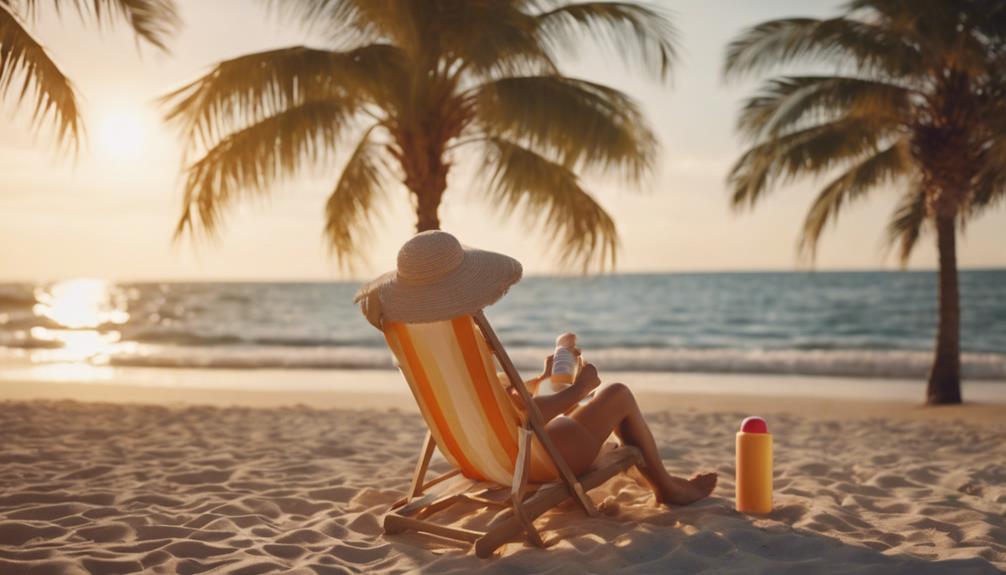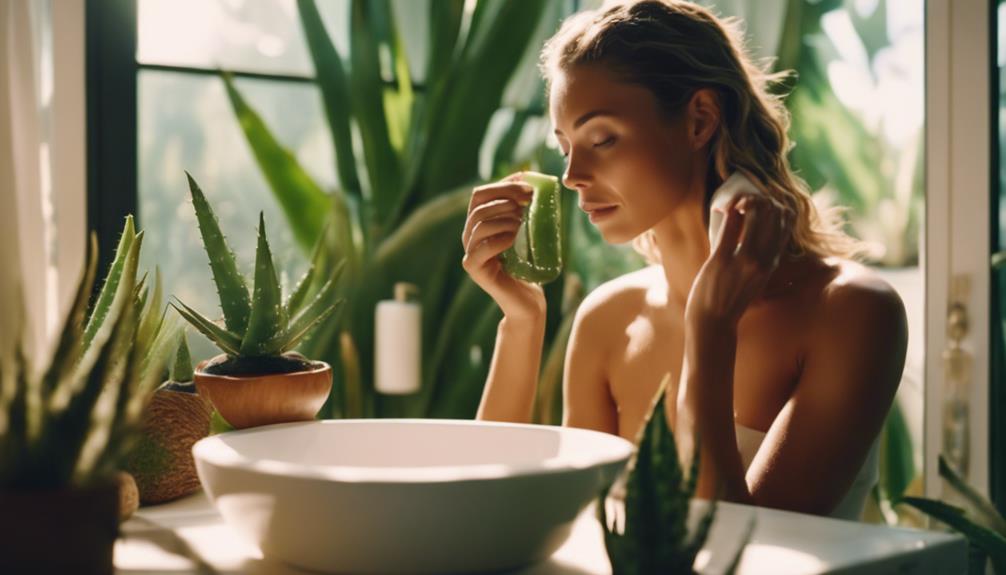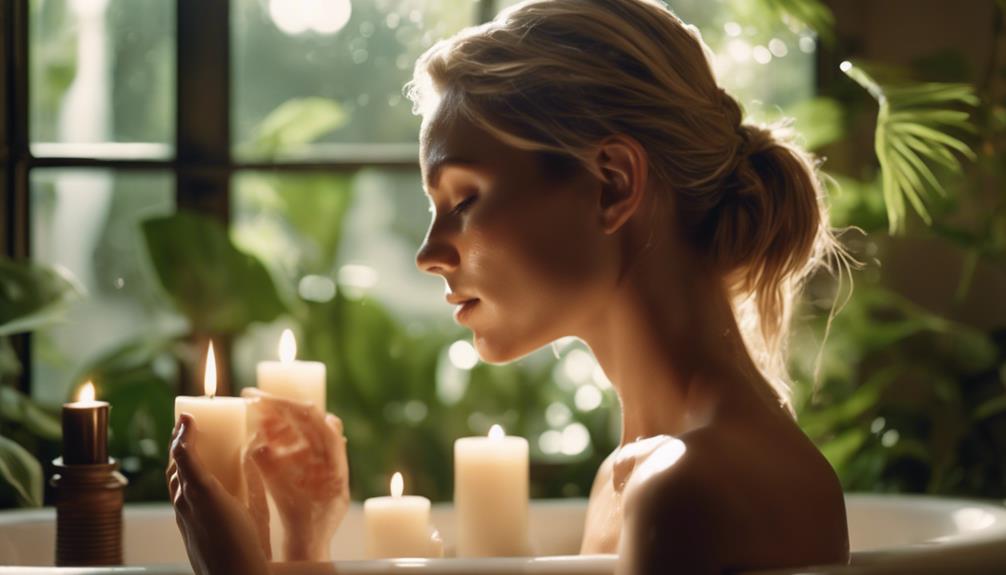To reveal the secrets to safe tanning, start by evaluating your skin type and choosing the right indoor tanning lotions without SPF. Protect your eyes with snug, UV-blocking goggles for complete coverage. Schedule your sessions wisely by beginning with shorter durations and waiting at least 48 hours between them. Use effective positioning to guarantee even tanning, and don't forget post-tanning care by hydrating and applying tan extender lotions. Keep your skin soft with specialized moisturizers. By following these tips, you can maintain a beautiful tan while prioritizing your skin's health—there's even more to discover for ideal results!
Key Takeaways
- Assess your skin type to tailor tanning sessions and avoid overexposure.
- Use indoor tanning lotions with melanin boosters; avoid any with SPF.
- Protect your eyes with snug-fitting UV-blocking goggles during tanning.
- Schedule sessions 1-3 times a week, allowing 48 hours for skin recovery.
Skin Type Assessment
To achieve a safe and effective tanning experience, you need to assess your skin type and determine its UV tolerance before starting any tanning sessions.
Begin by identifying whether you have fair, medium, or dark skin. Fair skin burns easily, while darker skin has more natural protection. Conduct a patch test on a small area to check for adverse reactions.
It's wise to consult a professional for an accurate assessment, especially if you're unsure. Start with short tanning sessions to let your skin adapt gradually.
Before tanning, shower and exfoliate to remove dead skin cells, and apply a non-oily moisturizer. Don't forget to protect your lips with SPF balm and avoid makeup to guarantee the best tanning results possible.
Choosing the Right Lotions
After evaluating your skin type, it's important to choose the right tanning lotions tailored to your specific needs for ideal results.
Look for indoor tanning lotions that contain melanin boosters and hydrating ingredients, as these can enhance your tan while keeping your skin moisturized. Avoid lotions with SPF, since they can hinder the tanning process.
After your tanning session, apply a tan extender lotion to lock in moisture and maintain your glow. Always hydrate internally by drinking plenty of water, which supports lasting results.
For post-tan care, opt for moisturizers designed specifically for maintaining your tan, and steer clear of oil-based products that can affect your results.
Choosing wisely will help you achieve that perfect sun-kissed look safely.
Importance of Eye Protection
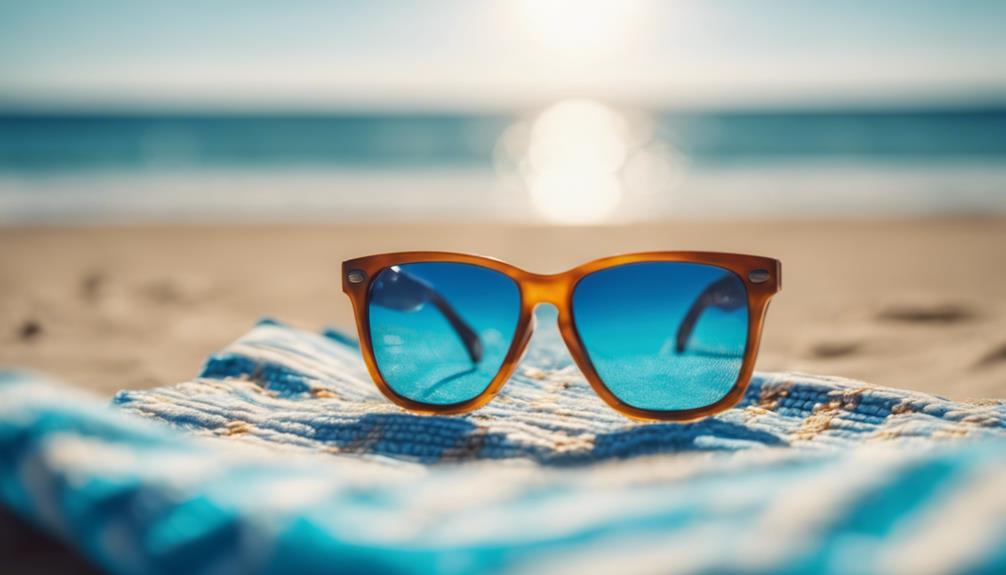
Wearing proper eye protection during tanning sessions is essential to safeguard your eyes from harmful UV rays. You should always wear goggles that provide full coverage and fit snugly to prevent any slippage. Remember, contact lenses won't protect your eyes from UV exposure—only specialized eyewear can do that. If you're unsure about the right fit, don't hesitate to ask for help from tanning consultants.
| Eye Protection Options | Features |
|---|---|
| UV-blocking Goggles | Full coverage, snug fit |
| Tanning Eye Shields | Comfortable design |
| Disposable Goggles | Single-use, hygienic |
| Prescription Goggles | Custom fit, UV protection |
Tanning Session Scheduling
A well-planned tanning schedule guarantees your skin stays healthy while achieving the desired glow.
Start with shorter sessions to let your skin adapt, gradually increasing the duration based on your skin type. It's vital to allow at least 48 hours between sessions for proper skin recovery and to prevent damage.
Limiting your tanning to 1-3 times a week helps maintain skin health without overexposure.
Don't forget to hydrate your skin with tanning extenders to prolong your tan's longevity.
Consistency in your schedule is key; sticking to it won't only enhance your results but also keep your skin looking great.
Effective Positioning Techniques
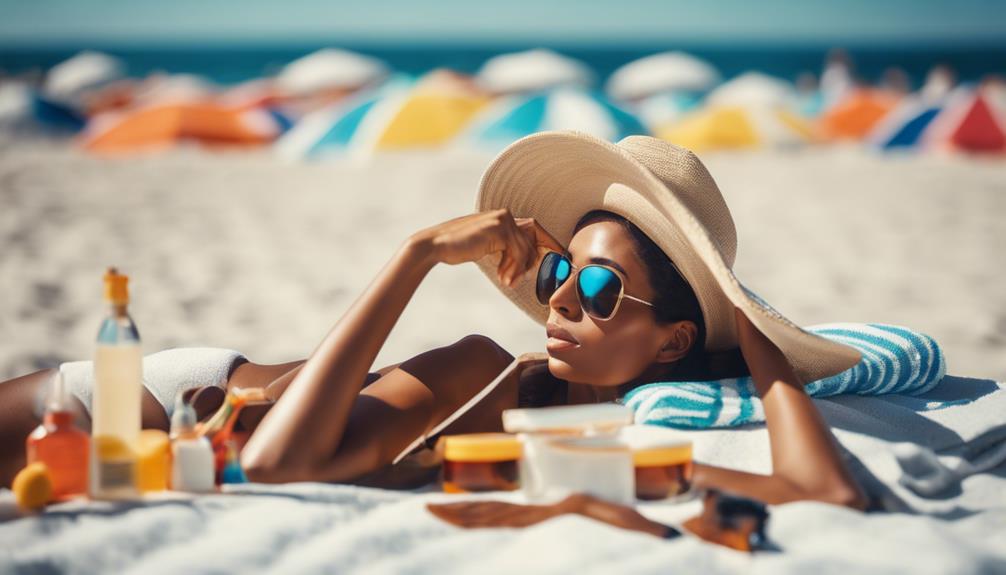
Effective positioning during tanning sessions guarantees even exposure and helps you achieve a flawless tan.
Start by lying on your back with your arms slightly away from your sides and palms facing up. This position allows UV rays to reach your entire body evenly.
Avoid resting your chin on your chest, as it can cause uneven tanning on your neck. Make small adjustments to your limbs throughout the session to guarantee thorough coverage.
You can also switch positions occasionally, like rolling onto your side, to help target hard-to-reach areas.
Finally, if you're using tanning equipment, remember to move consistently to maintain even exposure across all parts of your body.
Proper positioning is essential for achieving that sun-kissed glow you desire.
Essential Post-Tanning Care
Post-tanning care is essential for maintaining your glow and soothing your skin after UV exposure.
Start by hydrating your body; drink plenty of water to help your skin recover.
Apply a tan extender lotion right after tanning to lock in moisture and enhance your color.
At night, use a specialized moisturizer to keep your skin soft and vibrant.
Aloe vera can soothe any irritation, providing relief and hydration.
Avoid hot showers and harsh soaps for at least 24 hours post-tan to protect your skin.
Regularly moisturizing your skin will prolong your tan, ensuring it lasts longer and looks even.
Common Tanning Questions
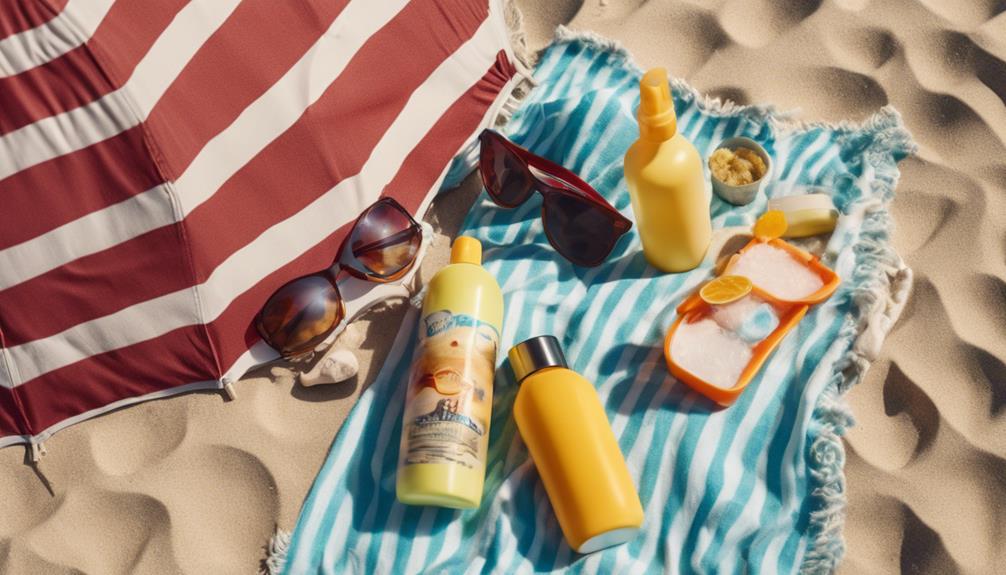
When exploring the world of tanning, you might have several questions about safety, techniques, and aftercare. Here are some common queries to help you navigate:
| Question | Answer | Tips |
|---|---|---|
| How often should I tan? | Limit to 1-3 sessions per week. | Allow 48 hours between sessions. |
| Do I need special lotions? | Yes, use indoor tanning lotions. | Avoid SPF lotions. |
| What's the best way to protect my eyes? | Wear UV-blocking goggles. | guarantee a snug fit. |
| How do I maintain my tan? | Hydrate and use tan extender lotion. | Moisturize nightly. |
| Can I tan if I'm using certain medications? | Consult a professional first. | Check for UV sensitivity risks. |
Frequently Asked Questions
Can I Tan if I Have Sensitive Skin?
Yes, you can tan with sensitive skin. Start with a patch test, choose suitable lotions, and keep sessions short. Always consult professionals, hydrate adequately, and guarantee proper aftercare to minimize irritation and enhance your experience.
Is Indoor Tanning Safer Than Outdoor Tanning?
You might think outdoor tanning's more natural, but indoor tanning can be safer with controlled environments and protective measures. It allows for a more consistent tan and reduces the risk of sunburn and skin damage.
How Can I Tell if I'm Over-Tanning?
You can tell you're over-tanning if your skin feels hot, looks red, or peels. Also, if you experience discomfort or irritation, it's time to stop and give your skin a chance to recover.
What Should I Do if I Get Sunburned?
If you get sunburned, remember that over 90% of skin changes are due to UV exposure. Apply aloe vera immediately, stay hydrated, and avoid further sun until your skin heals to prevent lasting damage.
Can I Use Self-Tanners With Indoor Tanning?
Yes, you can use self-tanners with indoor tanning. Just guarantee you apply them separately; wait for the self-tanner to develop fully before tanning. This way, you'll achieve a deeper, more even color without complications.
Conclusion
In your quest for that enchanting, sun-kissed glow, remember to prioritize protection and preparation.
By evaluating your skin type, selecting suitable lotions, and safeguarding your eyes, you'll bask in brilliance while minimizing risks.
Stick to a sensible schedule and practice proper positioning to maximize your tan.
Finally, indulge in essential post-tanning care to keep your skin smooth and shining.
Embrace these secrets, step into the sunshine, and let your radiance reflect the joy of safe tanning!
